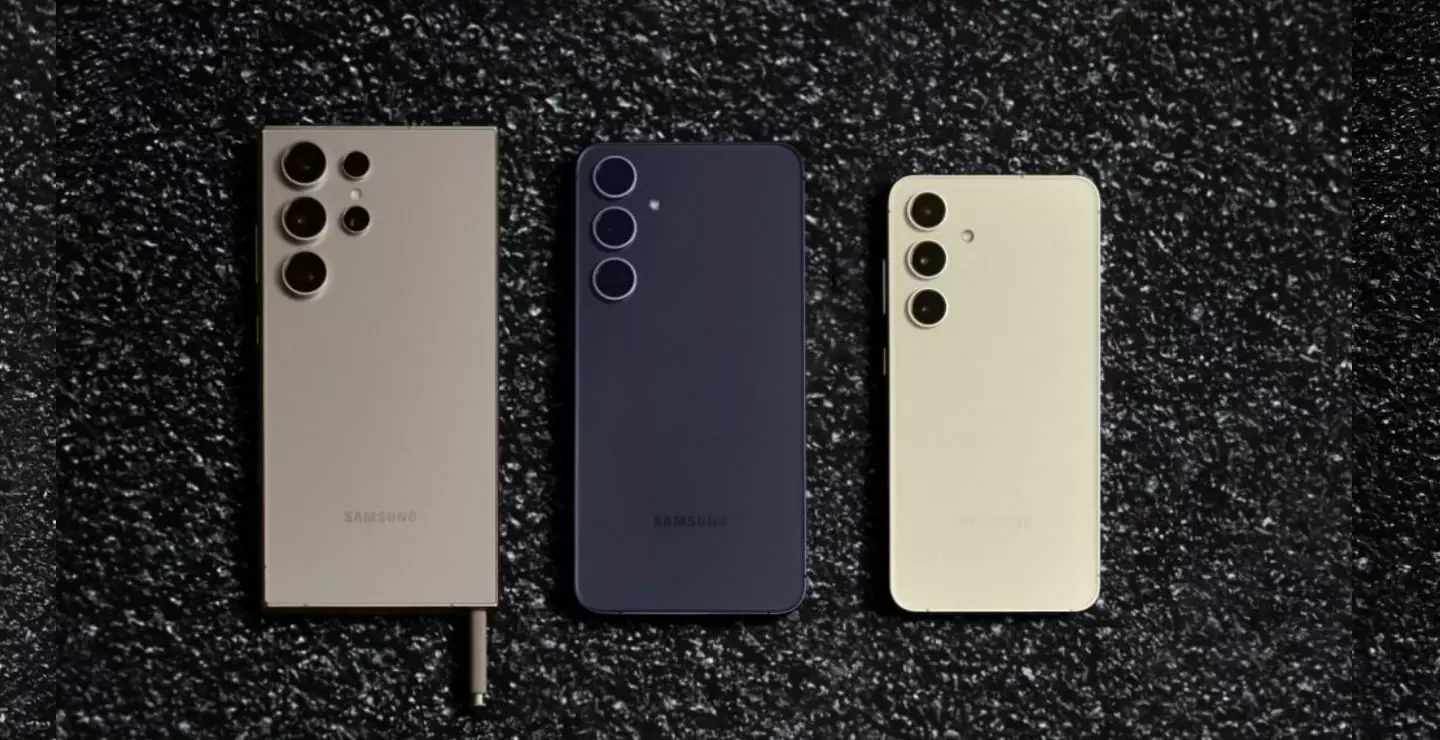In 2024, the global smartphone market experienced a notable revival characterized by a four percent growth in shipments year-over-year, according to a comprehensive report by a prominent market research firm. This shift in dynamics marked a significant change after two years of decline, signifying a restoration of consumer confidence attributed to improving macroeconomic conditions. Not only did the data reflect a recovery, but it also highlighted the fluctuations in the smartphone sector that have emerged following a decade of low sales.
Samsung reigned as the market leader, capturing a 19% share, largely due to the enthusiastic reception of its Galaxy S24 series and A-series smartphones. This development underlines Samsung’s adeptness in responding to consumer preferences in an evolving market landscape. The Galaxy S24 series, being positioned as the company’s inaugural AI smartphones, achieved outstanding success, particularly in Western Europe and the United States. This indicates a growing trend where consumers are inclined towards advanced technology features that enhance functionality and user experience.
Apple, trailing closely with an 18% market share, edged into a competitive position through its iPhone 16 series, which garnered mixed reactions. The disparities in reception seemed to stem partly from launch availability issues related to its advanced Apple Intelligence feature, reflecting the challenges tech giants face in balancing supply with consumer demand. However, Apple’s ability to thrive in non-traditional markets such as Latin America, Africa, and parts of Asia-Pacific signals a diversification strategy that acknowledges emerging market potential.
Xiaomi made impressive strides, emerging as the fastest-growing brand in 2024, capturing a 14% market share. This indicates a concerted effort by the company to innovate and appeal to a broader consumer base. Along with other competitors such as Vivo and Oppo, each holding an 8% market share, Xiaomi’s growth underscores the intensified competition in the smartphone arena. While the top five brands retained their positions, they were not immune to encroachment from emerging firms like Huawei, Honor, and Motorola, particularly indicated by Motorola’s rapid expansion into the mainstream market.
A pivotal element shaping market dynamics was the introduction of generative AI (GenAI) technologies in premium smartphones. The report underscores that by 2028, a staggering 90% of smartphones priced over $250 are expected to integrate GenAI capabilities. This technological advancement positions AI not merely as an added feature but as an essential attribute that could redefine consumer expectations. The evolving narrative around smartphone functionality is likely to emphasize enhanced user interactivity and personalized experiences, elevating the competitive stakes among manufacturers.
Despite the optimistic growth projections, it’s worth noting that the volumes of smartphones shipped will likely not reach the pre-COVID peaks. Market analysts predict that while shipment volumes are projected to increase by 4% in the upcoming year, revenue growth will outpace this with an 8% rise. This disparity hints at a shift in consumer behavior; buyers may gravitate toward premium models equipped with advanced technology rather than simply increasing volume through lower-priced alternatives.
The backdrop of improved macroeconomic conditions played a crucial role in fostering this growth. As consumer sentiment turned positive, the market began to exhibit signs of stability, especially in the latter half of 2023. These developments resonate positively with market analysts like Tarun Pathak, who highlighted that the recovery narrative is supported by broad-based growth across various regions, including Europe, China, and Latin America.
Looking ahead, significant trends indicate that 2024 could be just the beginning of a transformative phase for the smartphone industry, driven by innovation, aggressive competition, and evolving consumer preferences. As brands continue to exploit new technologies and respond dynamically to market shifts, the competitive landscape of the smartphone sector promises to remain vibrant and challenging. The integration of features such as GenAI is expected to not only redefine how smartphones are perceived but also reshape the strategies of major players as they navigate a future punctuated by rapid advancements and changing consumer demands.


Leave a Reply